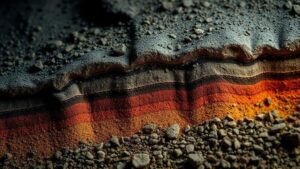Finding International Buyers for Rare and High-Value Minerals
Finding International Buyers for Rare and High-Value Minerals
The global market for rare and high-value minerals is both expansive and complex. For suppliers and producers, identifying and connecting with international buyers is crucial for maximizing profitability and ensuring sustainable growth. This article explores effective strategies for sourcing international buyers, examining key considerations, market dynamics, and successful case studies.
Understanding the Market Landscape
Before embarking on the journey to find international buyers, it is essential to understand the global market landscape for rare and high-value minerals. According to a report by the United States Geological Survey (USGS), the demand for minerals such as rare earth elements is projected to rise as industries, particularly electronics, renewable energy, and automotive sectors, intensify their need for these materials.
- The market for rare earths was valued at approximately $4.3 billion in 2020, with a forecasted growth rate of 7.7% per year through 2027.
- High-value minerals such as lithium and cobalt are key components in battery production, with lithium prices skyrocketing by over 300% in the past two years due to surging electric vehicle demand.
Identifying Target Markets
Identifying the right target markets is a fundamental step in finding international buyers. Factors such as local demand, competition, and regulatory considerations will influence market choice. Common target regions include:
- Asia-Pacific: Particularly China and Japan, which are major consumers of rare earth elements.
- North America: The United States is increasingly focusing on domestic sourcing due to geopolitical dynamics.
- Europe: The EU aims to establish a resilient supply chain for minerals necessary for technological advancements.
Utilizing Digital Platforms for Connection
With the emergence of digital platforms, reaching international buyers has become more accessible. Some effective platforms include:
- Trade shows and exhibitions: Events such as the Mining Indaba in South Africa provide networking opportunities with potential buyers.
- Online marketplaces: Platforms like Alibaba or TradeIndia facilitate direct connections with international trade clients.
- Professional networks: Utilizing LinkedIn can help establish relationships with industry professionals and potential buyers.
For example, the Mining Indaba has historically attracted thousands of participants from around the globe, resulting in substantial deals for exhibitors and attendees alike.
Leveraging Trade Associations and Chambers of Commerce
Collaboration with trade associations and chambers of commerce can enhance visibility and credibility. Organizations such as the International Council on Mining and Metals (ICMM) or national mining associations often have extensive databases of potential buyers and active engagement in advocacy and networking.
Building a Strong Value Proposition
When approaching potential buyers, creating a compelling value proposition is key. A value proposition should communicate what makes your minerals unique, such as:
- Superior quality: Offering minerals that meet or exceed industry standards.
- Sustainability: Highlighting eco-friendly mining practices can attract environmentally conscious buyers.
- Traceability: Providing documentation or certification that confirms mineral origin can build trust.
For example, a mining company that employs sustainable practices and provides high-quality lithium could emphasize these points to attract electric vehicle manufacturers, thus tapping into a lucrative buyer segment.
Establishing Regulatory Compliance
Compliance with international regulations is critical for securing buyers. Different countries have varying regulations regarding mineral sourcing, trade quotas, and environmental standards. For example:
- The European Union has established stringent requirements under the REACH regulation, which mandates comprehensive testing and verification of chemicals, including minerals.
- The Dodd-Frank Act in the United States imposes reporting obligations concerning conflict minerals.
Understanding and adhering to these regulations can prevent legal challenges and foster trust with buyers.
Case Studies: Success Stories
Examining successful case studies can illuminate effective strategies in practice. One notable example is Lynas Corporation, which successfully established a supply chain for high-value rare earth minerals from Australia to Japan. By leveraging strategic partnerships and prioritizing quality and compliance, Lynas has become a crucial player in the rare earth market.
Another example is the Canadian firm, Fortune Minerals, which has developed a strong customer base for cobalt and lithium by focusing on sustainable practices and aligning operations with customer values.
Conclusion and Actionable Takeaways
Finding international buyers for rare and high-value minerals requires a strategic approach that encompasses market understanding, leveraging technology, and building strong value propositions. By tapping into trade associations, establishing compliance, and using compelling marketing strategies, sellers can position themselves favorably in the global market.
- Conduct thorough market research to identify potential buyer regions.
- Use digital platforms for outreach and networking.
- Establish partnerships with trade associations for credibility and access to buyer databases.
- Develop a strong value proposition focused on quality, sustainability, and compliance.
By implementing these strategies, suppliers can enhance their chances of success in the competitive field of international mineral trade.


